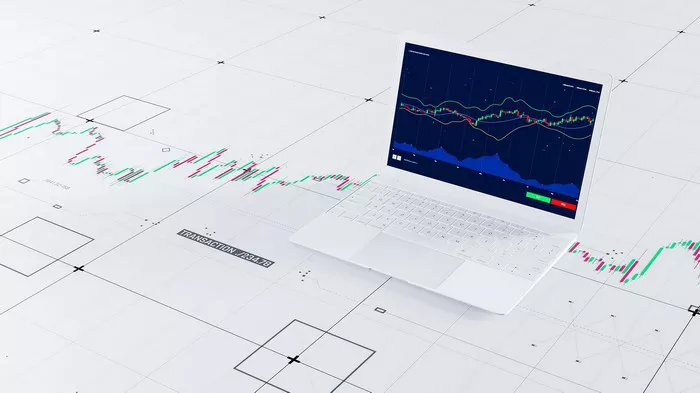In the world of stocks trading, understanding the basic concepts of price determination is crucial. One of the most fundamental aspects of stock trading revolves around the terms “bid” and “ask.” These two terms represent the buying and selling prices of a stock, and they play a vital role in the stocks market. The bid and ask prices define the price range within which trades can occur, and they give traders essential information about market liquidity and the supply and demand dynamics of a particular stock.
The bid price is the price at which a buyer is willing to purchase a stock, while the ask price is the price at which a seller is willing to sell it. The difference between the two is called the “spread,” which is a critical indicator of the market’s liquidity and the efficiency of price discovery in the stock market.
This article will explore the differences between bid and ask prices, their significance, and how they impact stock prices, market participants, and trading strategies. We will also discuss the concept of the bid-ask spread, how to interpret it, and how it influences trading costs and market behavior.
What is the Bid Price?
The bid price is the maximum price that a buyer is willing to pay for a particular stock. When a trader places a buy order for a stock, they are essentially bidding for the stock at a certain price. The bid price is influenced by various factors, including the stock’s current market price, recent trading history, and broader market conditions.
When you look at a stock’s quote in the market, the bid price represents the highest price that a buyer is currently offering. If you are a seller and want to sell your stock immediately, you would likely sell at the bid price.
It’s important to note that the bid price is often lower than the ask price, reflecting the difference between what buyers are willing to pay and what sellers are asking for the stock. The bid price can fluctuate throughout the day depending on changes in supply and demand and market sentiment.
What is the Ask Price?
The ask price, also known as the “offer” price, is the minimum price at which a seller is willing to sell a stock. The ask price represents the price at which sellers are willing to offer their shares for sale. If you are a buyer and want to purchase a stock immediately, you would likely buy at the ask price.
The ask price is influenced by various factors, such as market sentiment, supply and demand, and the current market price of the stock. Just like the bid price, the ask price can fluctuate throughout the trading day as new orders are placed and market conditions change.
Typically, the ask price is higher than the bid price, and the difference between the two is known as the “spread.”
The Bid-Ask Spread
The bid-ask spread is the difference between the bid price and the ask price. It is an essential concept in stocks trading because it represents the transaction cost of buying and selling stocks. The spread can vary depending on the liquidity of the stock, the volatility of the market, and the trading volume of the stock.
For example, if the bid price for a stock is $50 and the ask price is $51, the bid-ask spread is $1. The spread is effectively the cost of executing a trade. In liquid markets, the spread tends to be narrower because there are many buyers and sellers, resulting in more efficient price discovery. However, in illiquid markets, the spread can be wider, meaning that buyers and sellers may face higher costs when executing trades.
Traders often pay attention to the bid-ask spread as a way of gauging market efficiency and liquidity. A narrow spread typically indicates a highly liquid market, where buyers and sellers can easily transact at close prices. A wider spread, on the other hand, may indicate lower liquidity and higher transaction costs.
Factors Affecting the Bid and Ask Prices
Several factors can affect the bid and ask prices in stocks. Understanding these factors is important for traders who want to interpret the dynamics of stock pricing and make informed trading decisions. Some of the key factors that influence bid and ask prices include:
1. Market Liquidity
Market liquidity refers to the ease with which a stock can be bought or sold without affecting its price. Stocks with higher liquidity typically have narrower bid-ask spreads because there are more buyers and sellers in the market. In contrast, stocks with lower liquidity tend to have wider bid-ask spreads because there are fewer market participants, making it more challenging to buy or sell without impacting the price.
2. Stock Volatility
Stock volatility can influence the bid and ask prices. During periods of high volatility, the bid-ask spread may widen as market participants become more uncertain about the stock’s future price movements. In volatile markets, buyers and sellers may demand higher premiums for executing trades, leading to larger spreads.
3. Trading Volume
The trading volume of a stock can also affect its bid and ask prices. Stocks with higher trading volumes tend to have more buyers and sellers, resulting in narrower bid-ask spreads. Conversely, stocks with lower trading volumes may have less liquidity, leading to wider bid-ask spreads.
4. Market Conditions
Broader market conditions, such as economic data, geopolitical events, and overall market sentiment, can impact bid and ask prices. For instance, during times of market uncertainty or economic instability, bid-ask spreads may widen as traders become more cautious about executing trades. Conversely, in stable markets with positive sentiment, spreads may narrow.
How Bid and Ask Prices Impact Trading
Bid and ask prices play a crucial role in stocks trading by determining the price range within which trades can occur. These prices impact traders’ strategies, execution times, and costs. Below are some key ways in which bid and ask prices affect trading:
1. Impact on Trade Execution
When you place a buy or sell order, the bid and ask prices determine how quickly your trade will be executed. If the ask price is close to the current price, your order is more likely to be filled quickly. Similarly, if the bid price is close to the current price, sellers are more likely to agree to your price. The closer the bid and ask prices are to each other, the easier it is to execute a trade.
2. Influence on Trading Costs
The bid-ask spread represents the cost of executing a trade. A wider spread means higher transaction costs, while a narrower spread means lower costs. For active traders and day traders, the bid-ask spread can significantly impact profitability, especially when executing frequent trades. This makes it essential for traders to choose stocks with narrower spreads if they want to minimize trading costs.
3. Indicator of Market Liquidity
The bid-ask spread is a key indicator of market liquidity. Stocks with narrow spreads are more liquid, meaning they can be bought and sold quickly without significant price changes. Stocks with wider spreads are less liquid, making it more difficult to execute trades without affecting the price. Traders often use the bid-ask spread as a gauge of liquidity when selecting stocks to trade.
Conclusion
Understanding the difference between bid and ask prices is essential for anyone involved in stocks trading. These prices determine the price range within which trades can occur and provide valuable information about market liquidity, trading costs, and supply and demand dynamics.
By understanding how the bid-ask spread works and the factors that influence bid and ask prices, traders can make more informed decisions and optimize their trading strategies. Whether you’re a beginner or an experienced trader, knowing how bid and ask prices impact stock pricing is a critical part of navigating the stock market effectively.
In conclusion, while bid and ask prices may seem like simple concepts, they have far-reaching implications for trading decisions and stock market behavior. Traders who pay attention to these prices can gain a deeper understanding of market conditions and execute trades with greater confidence and precision.



































